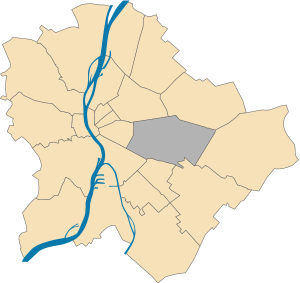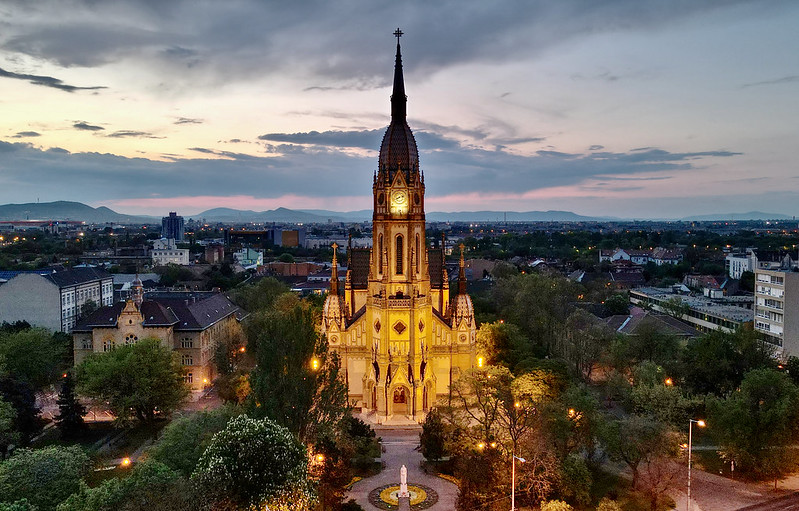Kőbánya: Budapest’s Historic Stone Mine District
Kőbánya, a district with a rich history, offers a unique blend of natural beauty, architectural marvels, and industrial significance. Its name, which translates to “stone quarry,” hints at its deep-rooted history in stone extraction, which dates back to the Middle Ages.
Introduction
Historical Significance
Kőbánya’s first mention, as “Kőér,” appears in King Béla IV’s 1244 donation letter, where the area was gifted to the city of Pest for cultivation. This historical reference is preserved in the name of Kőér Street. The district’s geological features paved the way for stone quarrying, brick and tile manufacturing, and, thanks to its hills, vine cultivation.
From the early 17th century, intensive mining took place in Kőbánya. By 1661, the land was owned by the Wattay family of Felsővatta. The growing construction needs of Pest further accelerated the extraction activities. Notably, materials from Kőbánya were used in constructing the Hungarian Academy of Sciences, the University Library, and parts of the pillars of the Széchenyi Chain Bridge. However, by 1890, due to the dangers associated with mining, these activities ceased in Kőbánya.
Cultural and Industrial Evolution
Alongside stone quarrying, the 19th century saw a flourishing of brick manufacturing and vine cultivation in Kőbánya. The district, with its beautiful vineyards, was a popular excursion spot for the residents of Pest. Remarkably, 80% of Pest’s vineyards were located in Kőbánya, with Ó-hegy and Új-hegy being the two prominent vine hills. The romantic-style Watchtower on Ó-hegy, built at its highest point (148 m), was established to prevent mischief in the vineyards.
The extensive cellar systems, remnants of the mining tunnels, primarily facilitated beer production and, to a lesser extent, mushroom cultivation. The most extensive system begins at the intersection of Kőrösi Csoma Sándor Street and Kolozsvári Street, stretching approximately 33 km.
From the 1800s, numerous factories were established in Kőbánya, including the mill of István Széchenyi. Post the 1838 flood in Pest, the Drasche brick factory was founded. The first breweries in Kőbánya began operations in the 1850s. The district also played a pivotal role in the pork trade, with the first pig accommodation established by Antal Schreyer in the 1840s, fostering connections with German and Bulgarian pork traders.
Modern Developments
The 1950s saw Kőbánya becoming an inner district of the newly-formed Greater Budapest, housing the geometric center of the city. The district’s boundaries underwent minor to significant changes, with areas west of Hungária Boulevard being transferred from the X district to the VIII district.
Kőbánya’s growth remained consistent during the socialist era. By 1973, the district housed approximately 80,000 residents. Simultaneously, around 120 operating factories employed about 110,000 workers, making Kőbánya the country’s largest worker district.
To address housing issues, various residential complexes were constructed between the 1960s and 1980s, marking Kőbánya’s urban transformation.
Location

Kőbánya is strategically positioned on the Pest side of Budapest, bordered by various other districts. Its location near major roads and public transport routes makes it easily accessible and a convenient spot for exploration.
Geography
Kőbánya is predominantly situated on flat terrain. Two elevated regions, Óhegy and Újhegy (translating to Old Hill and New Hill respectively), stand out, mirroring the height of Gellért Hill across the Danube river. Óhegy reaches an altitude of 148 meters.
Landmarks
Historical Landmarks in Kőbánya’s Centre
At the heart of Kőbánya stands a magnificent Catholic church, constructed between 1891-97. This eclectic-Art Nouveau masterpiece, dedicated to knight-king St. Ladislaus, is a creation of the renowned architect Ödön Lechner. A tribute to Lechner, in the form of a statue holding a model of the church, graces the exterior. The church’s towering bell-tower and vibrant Zsolnay “eozenic” porcelain tiles, designed by Ignatz Oppenheimer, are a sight to behold. Adjacent to the church, visitors can explore the “Pataky” cultural center, library, and the Szent László Gimnázium, a secondary school specializing in biology and languages, particularly Italian. The nearby “Mázsa tér” square is set to undergo a transformation with the proposed construction of six 60-meter tall apartment towers, subject to approvals.

Újhegy: A Blend of Past and Present
Újhegy boasts a sprawling housing estate, characterized by 10-story concrete structures built during the 1970s and 1980s. The district also houses one of Europe’s largest cemeteries, the New Public Cemetery. Plans are underway to relocate the horse-racing circuit and the Expo area to make way for new housing projects.
Modern Amenities and Recreational Spaces
For shopping enthusiasts, the north-east corner of Kőbánya offers the trendy Árkád shopping mall, located at the Örs vezér tere junction. Sports lovers can head to the south-east corner to the Sportliget, which features an indoor swimming pool and a deep fishing lake. The Népliget, a vast public park in the north-west corner, houses the impressive Planetarium. However, visitors should exercise caution as the park has seen a decline in recent years. The south-west corner serves as a major transit junction and the terminal station for the M3 underground line.
Parks in District 10
- Népliget: Established in 1855 with the planting of acacia trees, Népliget is the largest park in the capital. By 1870, it was adorned with plane trees, lindens, American hornbeams, and maple trees. The park reached its current size in 1942 and, in 1973, the Centenáriumi Park was added to commemorate the 100th anniversary of the city’s unification.
- Óhegy Park: Historically, this area was underlaid with tunnel systems and later utilized for stone quarrying in Kőbánya. Its transformation into a park began in 1965. Between 1973-1975, it was named the Magyar-Soviet Friendship Park, but post the political transition, it was renamed to its current title.
- Csajkovszkij Park: Originally the private park of the Dreher Mansion, it was converted into a public park in 1950 as the Kőbánya Youth Park. In 1963, it was renamed after the Russian composer Pyotr Ilyich Tchaikovsky. The park houses statues of Tchaikovsky by Zsigmond Kisfaludy Strobl, Chopin by János Kocsornyik, and Berlioz and Franz Liszt by László Hűvös.
- Dausz Gyula Park: Named after Kőbánya’s monographer, whose book titled “Kőbánya’s Past and Present” was published in 1913.
- Rottenbiller Park: Initially owned by the Rottenbiller family and later acquired by the Dreher family, the city purchased it in 1913 with plans for a public garden. Its beautification began in the 1930s, but it wasn’t until the 1950s that the park was fully developed. A bronze bust of Lipót Rottenbiller, sculpted by István Kamotsay, was erected in 1973.
- Újhegy Park: Previously the site of the Guttmann brick factory’s clay mine, which was closed due to water intrusion. Over time, the water formed mining lakes. In 1977, two of these lakes were filled to create a relaxation park in the Újhegy residential area. The third lake, now known as Mély Lake, became a popular fishing spot.
- Sportliget: A vast park equipped with a playground, it frequently hosts family days and other events.
- Gépmadár Park: Established between 1977-78 alongside Gépmadár Street, this park was part of the local residential area’s beautification project.
Demographics
Kőbánya, with its diverse population, mirrors the cosmopolitan nature of Budapest. As of recent data, the district is home to over 77,000 residents.
Education
Education remains a cornerstone in Kőbánya, with several schools and institutions catering to the district’s populace, ensuring a bright future for its residents.
Twin Towns
Kőbánya has established relationships with cities worldwide, fostering cultural exchanges and mutual growth.
Conclusion
Kőbánya, with its deep-rooted history in stone quarrying, offers a unique experience for those keen on exploring Budapest’s lesser-known facets. From its historical significance to its modern-day charm, Kőbánya promises a journey that’s both enlightening and memorable.